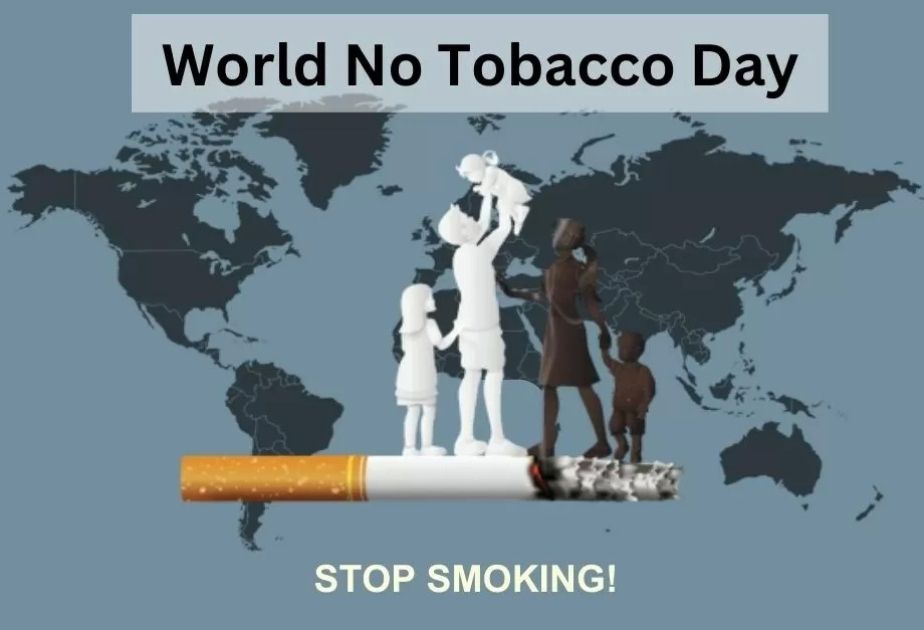WHO: The tobacco lobby targets children and young people

The World Health Organization (WHO) estimates that 37 million adolescents between the ages of 13 and 15 use tobacco, and that in many countries the rate of e-cigarette use among teenagers exceeds that of adults, according to the official website of the UNRIC, Azernews reports.
In the WHO European Region, 20% of 15-year-olds surveyed said they had used e-cigarettes in the past 30 days. This shows that the tobacco industry has no qualms about targeting the younger generation.
Deceptive strategies targeting the very young
In its new products, the tobacco industry promotes sweet, innocuous-looking flavors reminiscent of childhood, such as candy, fruit or chocolate, rather than the “tobacco” taste that doesn’t appeal to the youngest generation. In fact, over 70% of young e-cigarette users in the United States said they would stop smoking altogether if the only flavor available was “tobacco”.
The e-cigarette is just as dangerous and addictive as the traditional cigarette, but it is designed and presented as a toy, and at a low price.
‘These industries are intentionally designing products and utilizing marketing strategies that appeal directly to children’ says Dr Ruediger Krech, Director of the WHO’s Department of Health Promotion.
‘The use of child-friendly flavours like cotton candy and bubblegum, combined with sleek and colourful designs that resemble toys, is a blatant attempt to addict young people to these harmful products,’ he adds.
Greenwashing by the industry
Big tobacco companies present themselves as leaders in social and environmental responsibility, but only choose evaluation criteria that give them a positive image.
In an attempt to give themselves a good reputation, they promote simple environmental actions, such as planting trees or collecting cigarette butts on beaches, but in reality these actions have little impact, according to the WHO.
On the contrary, tobacco seriously harms the environment at every stage of its production; cigarette filters, made of toxic plastics, are one of the main sources of pollution.
Since the development of electronic products in the industry, toxic waste has been on the increase, particularly with the arrival of single-use e-cigarettes known as “puffs”.
New product, same danger
Despite existing progress in tobacco cessation, the emergence of e-cigarettes and other novel tobacco and nicotine products poses a serious threat to young people, and even children, and is undermining efforts to combat smoking.
Studies show that using e-cigarettes almost triples the risk of later smoking conventional cigarettes.
These deceptive strategies underline the need for strict regulation to protect young people from a harmful addiction that would last a lifetime.
‘History is repeating, as the tobacco industry tries to sell the same nicotine to our children in different packaging,’ says Dr Tedros Adhanom Gebreyesus, Director-General of the WHO. ‘These industries are actively targeting schools, children and young people with new products that are essentially a candy-flavoured trap. How can they talk about harm reduction when they are marketing these dangerous, highly-addictive products to children?’
Combating aggressive industry lobbying
The WHO is calling on governments to take strict measures to protect young people, by banning or severely regulating nicotine-based products, creating 100% smoke-free public spaces and increasing taxes on these products. Raising public awareness of misleading industry advertising and supporting youth-led educational initiatives are also essential.
‘Addicted youth represent a lifetime of profits to the industry,’ adds Jorge Alday, STOP Director at public health specialist Vital Strategies. ‘That’s why the industry aggressively lobbies to create an environment that makes it cheap, attractive and easy for youth to get hooked. If policy makers don’t act, current and future generations may be facing a new wave of harms, characterized by addiction to and use of many tobacco and nicotine products, including cigarettes.’
No comments:
Post a Comment